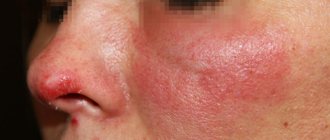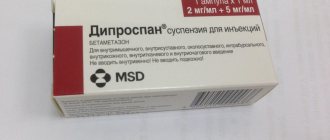Exudative enteropathy with disaccharidase deficiency is associated with congenital or acquired deficiency of enzymes for the hydrolysis (digestion) of disaccharides - lactase, sucrase, trehalase, etc. Disaccharides - milk sugar (lactose), sugar (sucrose), trihalose (mushrooms). In the future, we will look at this condition using the example of intolerance to milk sugar - lactose, which affects up to 30-70% of the world's population. Russian synonyms for this suffering: lactase deficiency, congenital adult lactase deficiency (with delayed onset), hypolactasia, lactose intolerance, lactase malabsorption.
The enzyme lactase is produced in the small intestine. Lactase digests lactose (milk sugar) from milk and dairy products into simple sugars - glucose and galactose, which are absorbed in the small intestine and enter the blood.
Lactose is the main source of energy in the human body and an activator of the nervous system. 5-6% of the population has a congenital deficiency of the lactase enzyme with normal, intact small intestinal mucosa, associated with a congenital gene mutation. Acquired lactase deficiency occurs when the intestinal mucosa is damaged and its synthetic function is impaired, including the production of lactase.
Insulin, thyroid and glucocorticoid hormones, the state of the autonomic nervous system, and nutritional composition have a great influence on the activity of the lactase enzyme in the small intestine.
If there is a lack of lactase enzyme production in the small intestine, lactose (milk sugar) is not digested, passes further through the small intestine and enters the large intestine. There it is exposed to fermentation processes and the action of colon microflora.
And if the cause of lactase deficiency is in the small intestine, then the clinical manifestations of this condition are noted in the colon. With a lack of lactase, unabsorbed milk sugar (lactose) reaches the colon. Under the influence of anaerobic bacteria, it is broken down to form short-chain acids, carbon dioxide, hydrogen and fatty acids. As a result, along the osmotic gradient, water rushes into the lumen of the colon, which leads to the development of osmotic diarrhea and a decrease in the pH of the stool.
Lactase deficiency - causes
The causes of lactase deficiency in adults may be the following:
- inflammatory bowel diseases of bacterial, viral (rotovirus), parasitic (giardiasis) etiology; for example, a rotovirus penetrates the mature cells of the microvilli of the small intestinal mucosa, destroys and rejects them, the mucosal cells cease to form the enzyme lactase, the dysentery bacillus, entering the intestine, produces toxins, causes inflammation throughout the small intestine, multiplies intensively in the ileum and then passes to the large intestine; Giardia lives in the upper small intestine, attaches to the mucosal villi, multiplies, affects the intestinal wall deeper, and disrupts parietal (membrane digestion) by disrupting enzyme production.
- chronic diseases of the stomach, biliary tract, pancreas,
- operations on the gastrointestinal tract,
- endocrine diseases (diabetes mellitus, hyperparathyroidism),
- Whipple's disease is a rare disease of the small intestine;
- gluten enteropathy (celiac disease), with celiac disease the synthesis of all enzymes is disrupted, including lactase, and lactase deficiency occurs, the manifestations of which are significantly reduced by following a gluten-free diet;
- Crohn's disease is a granulomatous enteritis that affects the entire wall of the small intestine in any part of it. Inflammation develops, then scar tissue, and enzyme synthesis stops; damage to the mucous membrane is based on autoimmune mechanisms;
- food allergy - damage to enterocytes (cells of the mucous membrane of the small intestine), it is called allergoenteropathy, which is based on immunoallergic antigen-antibody complexes, the antigen is the food product, and the body produces antibodies; the antigen-antibody complex in cells causes inflammation, the release of neurotransmitters, which leads to damage to enterocytes, and their ability to secrete lactase is impaired;
- bacterial overgrowth in the small intestine;
- lymphoma of the small intestine.
Why is there not enough lactase in the intestines?
All people have a huge amount of lactase at birth. This is how nature took care of man so that he could survive. Babies feed on their mother's milk and need this enzyme to digest their main food.
There are three types of lactose intolerance in adults.
- Alactasia . Congenital lactase deficiency is extremely rare. This is an inherited autoimmune disease. On Earth, such people can be counted on one hand. Previously, babies with congenital lactase deficiency died, but now, thanks to progress, lactose-free formulas have appeared.
- Secondary hypolactasia. Temporary lactase deficiency occurs after intestinal infections, injuries, and operations on the small intestine. In this case, there is no need to take special actions; you should wait out this period and the enzyme production will normalize.
- Primary hypolactasia. This type of lactase deficiency or lactose intolerance in adults occurs in people who, like everyone else, have a large amount of the enzyme at birth, but it decreases with age. This is genetically determined. Depending on the region of residence, the switching age may be different.
Lactose intolerance in adults is a feature which you can fully live. For more serious diseases, there are special treatment programs at the Mashuk Aqua-Therm sanatorium.
Lactase deficiency - symptoms
The severity of clinical manifestations depends on the degree of lactase deficiency, the amount of milk and dairy products, and the severity of the disease, which is recognized as the cause of lactase deficiency. Thus, when consuming more than 200 ml of milk and dairy products, only 5% of people experience pronounced manifestations of intolerance, 10-12% have clinical manifestations only when consuming whole milk, 60-70% of the population suffer from varying degrees of lactase deficiency, 5-10 % can consume milk up to 200 ml and unlimited fermented milk products.
With significant enzymatic deficiency of lactase, approximately 1 to 2 hours after consuming milk or dairy products, a person may develop a complete picture of lactase deficiency:
- heaviness, bloating, rumbling in the stomach, caused by the breakdown of lactose in the colon and the formation of carbon dioxide and hydrogen;
- pain of a bursting nature, due to increased gas formation and distension of the colon and irritation of pain receptors;
- loose frequent stools - copious, watery, light yellow with a sour odor due to the formation of fatty acids, increased osmotic pressure and the attraction of water into the colon;
- nausea, single vomiting.
In addition to intestinal manifestations, general weakness, rapid heartbeat, sweating, and headache may occur.
If supplementary feeding is needed?
In the first three months, all children, regardless of the degree of risk of developing CM, are recommended to use only mixtures with specially prepared protein. Their degree of allergenicity is significantly reduced, which is why they are called hypoallergenic. The NutrilakPremium Hypoallergenic mixture is additionally enriched with probiotics and food substrate for their growth and development (prebiotics). The NutrilakPremium Hypoallergenic fat component in combination with lutein best provides all the needs for the development of the child’s brain, vision and motor skills.
What is the difference between lactase deficiency and milk allergy?
Lactase deficiency is often associated with a food allergy to milk. This is a misconception, because The cause of milk allergy is intolerance to the milk protein - casein, and not to the milk sugar - lactose.
Unlike food allergies, the clinical manifestations of lactase deficiency depend on the amount of product containing milk sugar.
How does an allergy to BCM manifest in a baby?
Symptoms of ABCM can be very different.
With skin lesions:
- the appearance of dry skin, sometimes in the form of plaques
- redness of certain areas of the skin (around the mouth, arms and legs, cheeks, chest and abdomen)
- the appearance of weeping spots and crusts with severe itching
- long lasting diaper rash
Involving the gastrointestinal tract:
- private regurgitation
- colic
- constipation
- diarrhea
- mucus in stool
- blood-streaked stool
- poor appetite and slow weight gain
The mucous membranes of the eyes, nose and respiratory tract may be involved with the following symptoms:
- lacrimation
- prolonged runny nose
- distant wheezes
- paroxysmal cough
All this can also affect the baby’s behavior in the form of:
- irritability
- sleep disorder
- bouts of crying and anxiety
Diagnosis of lactase deficiency
Diagnosis of lactase deficiency largely depends on the anamnestic data of a person who has had poor tolerance to whole milk throughout his life, and the exclusion of chronic diseases of the gastrointestinal tract, food allergies, chronic enteritis and other causes of the disease.
The following laboratory data should be noted:
- A genetic blood test, gene determination (LCT, LPA) helps to identify lactose intolerance and predict the development of lactase deficiency in children over 1.5 years of age.
- The oldest scatological analysis of stool has not lost its significance, by which it is possible to identify disturbances in the absorption of carbohydrates (sugars): increased starch, fiber, iodophilic flora, decreased stool acidity less than 5.5, determine carbohydrates in stool.
- Glycemic load test with lactose - a test of lactose tolerance. The blood glucose level is determined on an empty stomach and 15, 30 and 60 minutes after a lactose load of no more than 50 g. If the lactase enzyme is insufficient, within 60 minutes after taking lactose, the blood glucose level increases by less than 1.1 mmol/l, i.e. , no more than 20% of the initial level - a flat glycemic curve. The most accurate research method.
- Hydrogen breath test - an increase in the concentration of hydrogen in exhaled air due to bacterial breakdown of disaccharides in the colon. The study is carried out on an empty stomach after a 14-hour fast. Preparation for the study: the patient follows a diet that excludes slowly digested foods (legumes, bran and carbonated drinks). Immediately before and during the examination, smoking and chewing gum are not allowed, and physical activity is limited 2 hours before the examination. Before the first intake of exhaled air, oral hygiene is carried out - teeth brushing. Then the patient is given 50 g of lactose and the hydrogen concentration in the exhaled air is determined every 15 minutes, if the hydrogen concentration is >20 ppm - a criterion for lactase deficiency. In 20% of cases the result is false positive.
- A biopsy of the small intestinal mucosa, revealing a decrease in lactase activity, is the “gold standard”, but is rarely performed.
Differential diagnosis must be carried out with food allergies, pseudoallergic food intolerance, chronic enteritis and other causes of lactase enzyme deficiency.
What is lactose intolerance and where does it come from?
A distinctive feature of humans and all representatives of the class of mammals is the presence of mammary glands and feeding their offspring with milk.
Lactose, or milk sugar, is the main carbohydrate in mother's milk, which is the main source of nutrition and energy for the baby in the first year of life. Once in the duodenum, the milk sugar molecule is broken down by a special enzyme, lactase, into simpler carbohydrates. These substances are then absorbed by the small intestine, enter the bloodstream and travel through the bloodstream to the organs and tissues of the body.
Almost 75% of people on the planet are intolerant to dairy products. This condition is called “lactose intolerance.”
This inability of the body to digest lactose is associated with a complete absence of the lactase enzyme or a decrease in its production.
Treatment of lactase deficiency. Food selection
Treatment consists of eliminating whole milk and dairy products from the diet. Currently, products with a reduced lactose content are produced and labeled “hyla”; products manufactured by Valio, Parmalat, and President are treated with lactase and labeled with the “laktoosition” symbol, most often for children.
Elimination diets (test consumption of individual foods containing milk sugar) are of great importance in both diagnosis and treatment.
If taking any dairy product - whole milk, fermented milk products, cottage cheese, cheese, coffee with cream, butter, etc. causes clinical manifestations of intolerance, if treatment is not effective, and clinical signs disappear without treatment, then we can talk about dairy intolerance sugar, the product should be excluded.
In products that have undergone lactic acid fermentation, when milk sugar turns into lactic acid, there is little lactose and therefore the use of fermented milk products in nutrition is possible (yogurt, fermented baked milk).
Products with live lactobacilli can be well tolerated, which can be done by preparing a live fermented milk product at home using starter cultures - Narine or Evitalia.
The amount of lactose in a dairy product is inversely proportional to its fat content, so there is practically no lactose in butter, and heavy and half-fat cream contains less lactose than whole milk.
When making some hard cheeses (cheddar, Parmesan, Swiss), the whey, where lactose is concentrated, is separated. Therefore, lactose-poor cheeses are suitable for consumption by lactose intolerant people. But homemade cheese and soft cheeses are rich in lactose.
Products containing lactose should be divided into several doses throughout the day.
Lactose-free products include fruits, vegetables and their juices, cereals, honey, butter, rice, vermicelli, meat, fish, poultry, chicken eggs, salt, nuts.
Atopic diseases. How to suspect them?
Often people don’t even know about the diagnoses listed above because they don’t see a doctor.
The following symptoms should alert you:
- seasonal nasal congestion or runny nose with copious mucus production
- occasional lacrimation
- bouts of coughing and sneezing
- prolonged dry cough
- bouts of difficulty breathing
- wheezing
- rashes, redness and itching of the skin
- skin prone to dryness and flaking (periods or after contact with something)
- redness and/or other skin reaction to sun or cold exposure
- skin irritation after contact with something
- reactions to insect bites
- reactions to drugs
If the above symptoms occur, then there is a high probability of atopy. In this case, it is better to seek advice from a specialist. If you have allergies, be sure to tell your pediatrician about it and monitor your child’s diet.
Hidden lactase
ATTENTION!
To improve the structure, taste and other properties, lactose is often used in the manufacture of food products. It is “hidden” in dry milk formulas, bread, frozen vegetables, canned soups, dressings and sauces, spaghetti, sausage, jam, sweets, instant foods, fast food, ketchup, mayonnaise, chocolate (except bitter). Read the product ingredients!
Milk sugar (lactose) is an auxiliary component of many drugs, for example, Ganaton, Gastal, Motilium, Cerucal, Imodium, Karsil, Linex, No-shpa, Kvamatela, Dulcolax, Gelusil, Galstena, Wobenzym, Mexidol, Corvalol, Warfarin, Bilobil, Panzinorm -forte, Omeza, and other drugs. Read the annotations for medications! Considering that lactase deficiency is based on a deficiency of the small intestinal enzyme - lactase, there are currently drugs that perform a replacement function for the lack of this enzyme. Dietary supplements Lactase, Lactazar can be taken 1 capsule along with a dairy product and help digest milk sugar, Tylactase taken 1 capsule with food or 2 capsules added per 1 liter of milk, store in the refrigerator, Lactrase 1-2 capsules before taking dairy products.
Forecast. If lactase deficiency is congenital, elimination diets are beneficial. In acquired variants of lactase deficiency, the course of the underlying disease that caused this type of enteropathy is important.
Is milk not for everyone?
The main task of the immune system is to recognize “self” and “foreign” cells. It reacts mainly to substances of protein nature, forming either a “Friend” (so-called immunological tolerance) or “Enemy” (antigen) response. When the response is “Enemy,” specific substances (antibodies) are produced that are aimed at fighting it. But, as with any system, there are failures.
Allergy (atopy) is an example of one such failure, when even friends are blacklisted. The child’s immune system begins to react to BCM inappropriately and excessively, blacklisting it. Beneficial protein turns into an allergen. This reaction is called "hypersensitivity."
The reasons for the occurrence of such “problems” are not reliably known to anyone. Scientists only build hypotheses, accumulate and systematize knowledge. All experts agree that genetic predisposition plays an important role. The only way to break the vicious circle of allergies and help a person is to exclude the causally significant allergen from the diet (environment) of this person.
This is called elimination (and elimination measures).
How to confirm the diagnosis of ABCM?
There are not many tests in a doctor's arsenal for this, and there are no gold standards. There is no analysis that can confirm the diagnosis with 100% certainty.
The immunological tests performed can be divided into:
- nonspecific, confirming the allergic nature of inflammation
- specific, indicating the degree of significance of the influence of a particular allergen
Difficulties in diagnosing ACM It is extremely rare that only one allergen (CAM) is the cause, the trigger that triggers inflammation
- Most often these are several allergens at once (polyvalent allergy)
- There is cross-reaction between different groups of products
- If the child is breastfed, immunological tests are difficult to interpret (due to the presence of maternal antibodies in his blood)










